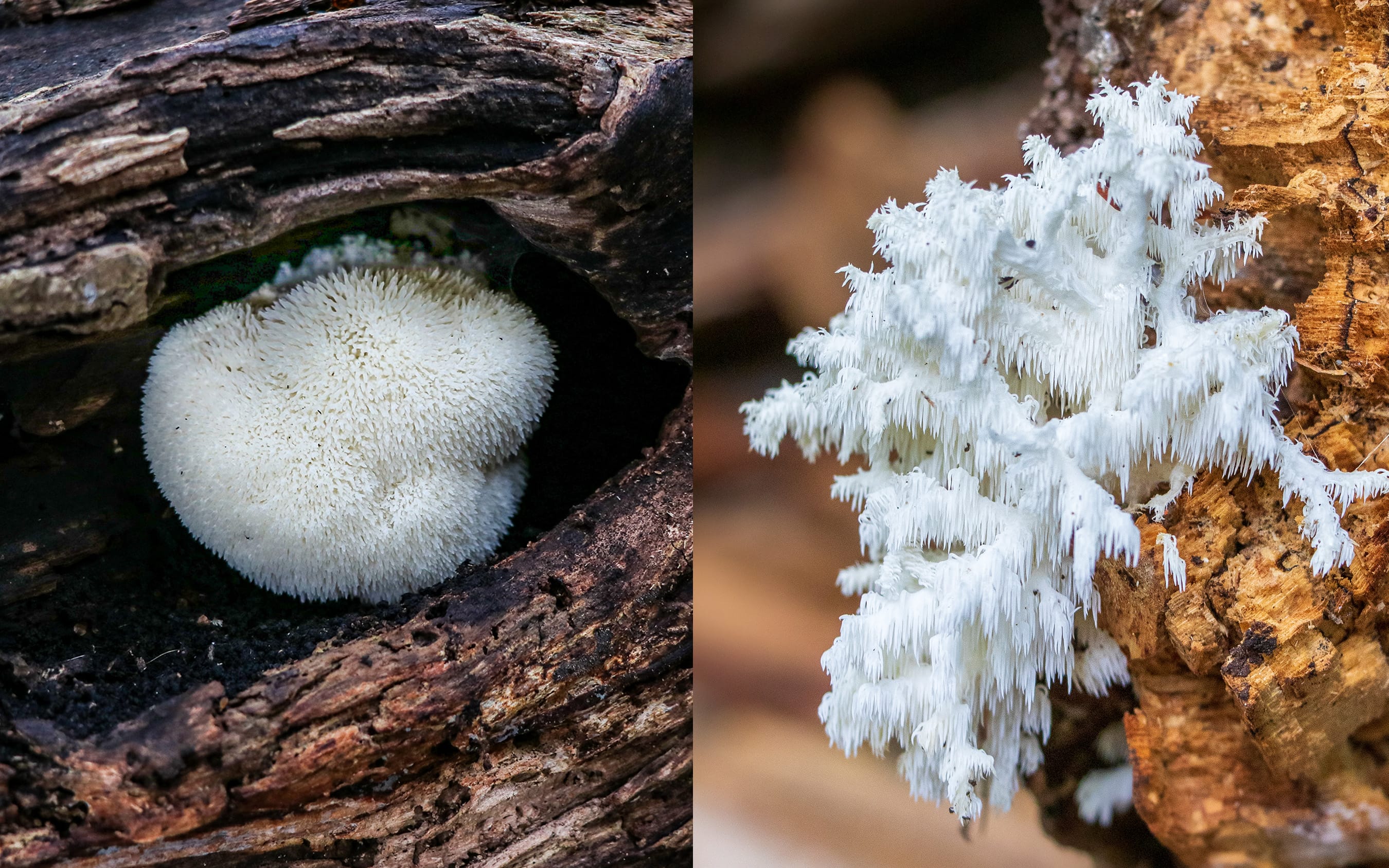Sautéed Lion's Mane Mushroom

I've been wanting to try lion's mane (Hericium erinaceus) for quite some time. I got tired of waiting to find it in the wild, so I purchased a growing kit. After 2 weeks of regular misting and patiently watching it grow, I was able to harvest enough to try it out! Whenever I try a mushroom for the first time, I always do a very simple preparation, so I can really taste it and compare it to others. You can adapt this simple recipe to just about any mushroom out there, because the combination of butter, salt, and lemon juice elevates their natural flavor.
🍽 Jump to the recipe ↓
Hericium erinaceus

I grew the lion's mane for this recipe from a growing kit. On the left, it's on Feb. 19 (8 days after opening), when the mycelium is starting to form small fruitbodies. On the right, it's on Feb. 24 (5 days later), when I harvested it.
Description
Lion's mane is part of tooth fungi, a group of mushrooms that produce spores on pendant, tooth-like or spine-like projections. When growing in the wild, the mushroom has long spines (around 1cm), but when you grow it from a growing kit, it barely has any—it ends up looking like a white fuzzy ball.
It has become quite popular as a gourmet mushroom that goes by the name of pom pom mushroom, in reference to its appearance, and for its medicinal properties, when it's usually referred to as lion's mane. It is most widely known to support natural immunity, brain, and nervous system. In traditional Chinese medicine, it has been used to fight stomach ailments and prevent gastrointestinal cancer.1
In the wild, it is both a parasite that grows on living hardwoods as well as a saprobe that decomposes dead hardwoods. It usually grows as a single fruitbody, often on tree trunks way above your head.
There are other Hericium species, like Hericium coralloides, which however forms highly branched fruitbodies, as opposed to a a single clump like H. erinaceus.

I've only found Hericium erinaceus in the wild once (left), and at the time I didn't pick it! On the right is a simialar species, Hericium coralloides, which is also edible and delicious.
Identification Recap
- forms a single whitish clump of dangling spines that are about 1 cm when the mushroom is mature (younger specimens can have shorter spines or barely any of you grow it from a kit)
- grows on both living and decomposing hardwoods
Taste & Edibility
Lion's mane is a meaty mushroom similar to crab or lobster in texture and flavor. It is soft, but holds shape well. Once cooked, it is tender and juicy. It can sometimes be bitter. Taste a tiny piece of it and if it is, parboil it in water to remove the bitterness.
Sautéed Lion's Mane Mushroom
Reminiscent of crab or lobster, lion's mane not only tastes delicious, but it's also good for you. Packed with myconutrients that support your natural immunity, brain, and nervous system, this mushroom can be sautéed with butter, shallots, and wild chives to create a satisfying, hearty meal.

Disclaimer
Please be extremely careful cooking and eating foraged mushrooms. Never eat a mushroom that you are not 100% sure of its ID. The best way to learn how to identify and forage for edible mushrooms in your area is to join a local mushroom club or go with a trusted mushroom identifier or a mycologist. Then, even if you are 100% sure of its ID and know it's an edible mushroom, always try small quantities of a new mushroom first before eating a large batch to make sure it sits with you well. Eat at your own risk.
Ingredients
- 2 tsp olive oil
- 1 medium shallot (sliced into rings)
- 8 oz lion’s mane mushroom ( cleaned and sliced into steaks 1/2-inch thick)
- 1/2 tbsp butter
- 1 tsp lemon juice
- salt & pepper to taste
- 2 tsp wild chives
Preparation

- Melt 2 tsp of butter in a heavy-based saucepan on medium heat. Add the sliced shallot and sauté until translucent, about 2-3 minutes.
- Add the sliced lion's mane and sauté about 4 minutes per side. Then stir, add butter and sauté for additional 2 minutes, for a total of 10 minutes.
- Add lemon juice and season to taste with salt and pepper.
- Toss with wild chives.
- Serve on toast, as a hearty sandwich, with rice, or as a side dish.


Enjoy!
Let me know what you think in the comments! I'd love to hear from you. Head to my Instagram account @fungiwoman for daily posts about my mushroom adventures. Also, check out my shop for some mushroom-inspired products and sign up for the newsletter to get updates.
Research Sources
1 Mycelium Running: How Mushrooms Can Help Save the World by Paul Stamets, Ten Speed Press, 2005.
Shop
Grab some mushy merch!